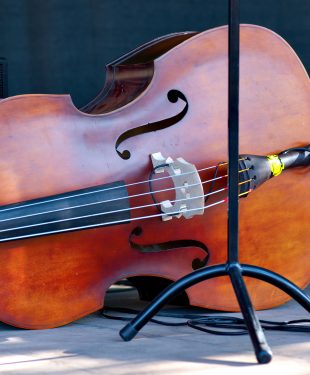Evolution of the Double Bass
Today we want to share info on the history and evolution of the double bass. The double bass, also recognized as the contrabass or upright bass, is a musical instrument with a fascinating past and a remarkable transformation over time. From its origins to its position in today’s orchestras and jazz bands, the double bass has experienced numerous adaptations to cater to diverse musical genres and playing techniques. Let’s embark on an enthralling voyage through history to delve into the development of this instrument.
Origins and Early Developments
The precursors of the bass can be traced back to ancient civilizations like Egypt, Greece, and Persia. These early bass-like instruments, such as the nefer” and Persian “karna,” were played using either a bow or fingers and featured a body shape resembling that of a modern-day double bass.
During Europe’s Renaissance period, significant strides were made in shaping the bass. It is believed that instruments from the viol family played a role in its development. The violone, which was a version of the viola da gamba, with a back and six strings tuned in fourths and fifths, had particular influence.
The double bass, which was commonly used as a bass instrument in ensembles during the early 17th century, underwent significant changes in the Baroque period. This was when it acquired its shape with a back and four strings tuned in fourths. Due to its richer sound, it gradually replaced the violin as the bass instrument in orchestras. So, if you are planning to get professional double basses for sale, there are multiple options available in the market.
However, it’s important to note that the Baroque era double bass was smaller compared to its counterpart. It had a neck and a smaller fingerboard, which limited its range and versatility. It primarily served as a supporting instrument, providing harmony and rhythm in ensembles. In the century, advancements in instrument-making techniques and evolving tastes brought about notable transformations for the double bass. Innovations such as metal wound strings and stronger timbers revolutionized its construction, resulting in a size and resonant sound.
At the time, composers like Mozart and Beethoven played a role in elevating the prominence of the double bass within orchestras. They started incorporating passages for this instrument while exploring its soloistic potential, expanding its capabilities beyond traditional boundaries. The growing recognition of the bass’s capabilities led to a need for an instrument that could cover an extended range.
Consequently, luthiers started experimenting with designs and sizes. In the century, they introduced the three-stringed bass, which offered greater flexibility and range. Over time, this evolved into the four versions we commonly use today. During the century, soloists and luthiers continued to push the boundaries of what the double bass could do. Innovations such as steel core strings, adjustable bridges, and advancements in bow-making techniques further enhanced its capabilities.
The Impact on Jazz
 The evolution of the double bass played a role in shaping jazz music. In the 1920s and 1930s, it was the bass instrument in jazz bands. Bassists like Jimmy Blanton and Ray Brown revolutionized bass playing by introducing walking bass lines and improvisation techniques.
The evolution of the double bass played a role in shaping jazz music. In the 1920s and 1930s, it was the bass instrument in jazz bands. Bassists like Jimmy Blanton and Ray Brown revolutionized bass playing by introducing walking bass lines and improvisation techniques.
To meet jazz’s demands, luthiers started developing more portable versions of the bass. Additionally, slapping the strings against the fingerboard to create sounds (known as “slap bass”) gained popularity in jazz circles. Due to these developments, the double bass has become a part of the rhythm section in jazz bands.
The Modern Double Bas
The double bass has undergone advancements and adaptations to suit musical genres and styles in today’s music scene. Manufacturers now employ materials and techniques to construct double basses, resulting in instruments that are more durable, versatile, and easier to play. Additionally, electric and hybrid variations of the bass have been introduced, giving bassists options for performances.
Conclusion
As contemporary composers and musicians continue to explore the possibilities of the bass, its role in symphony orchestras, jazz bands, and other music genres will undoubtedly keep evolving. The captivating journey of the bass – from its origins to its present-day form – stands as a testament to its enduring charm and significance in the world of music.
Read more music articles at ClichéMag.com
Images provided by Deposit Photos, BingAI, Adobe Stock, Unsplash, Pexels, Pixabay & Creative Commons




